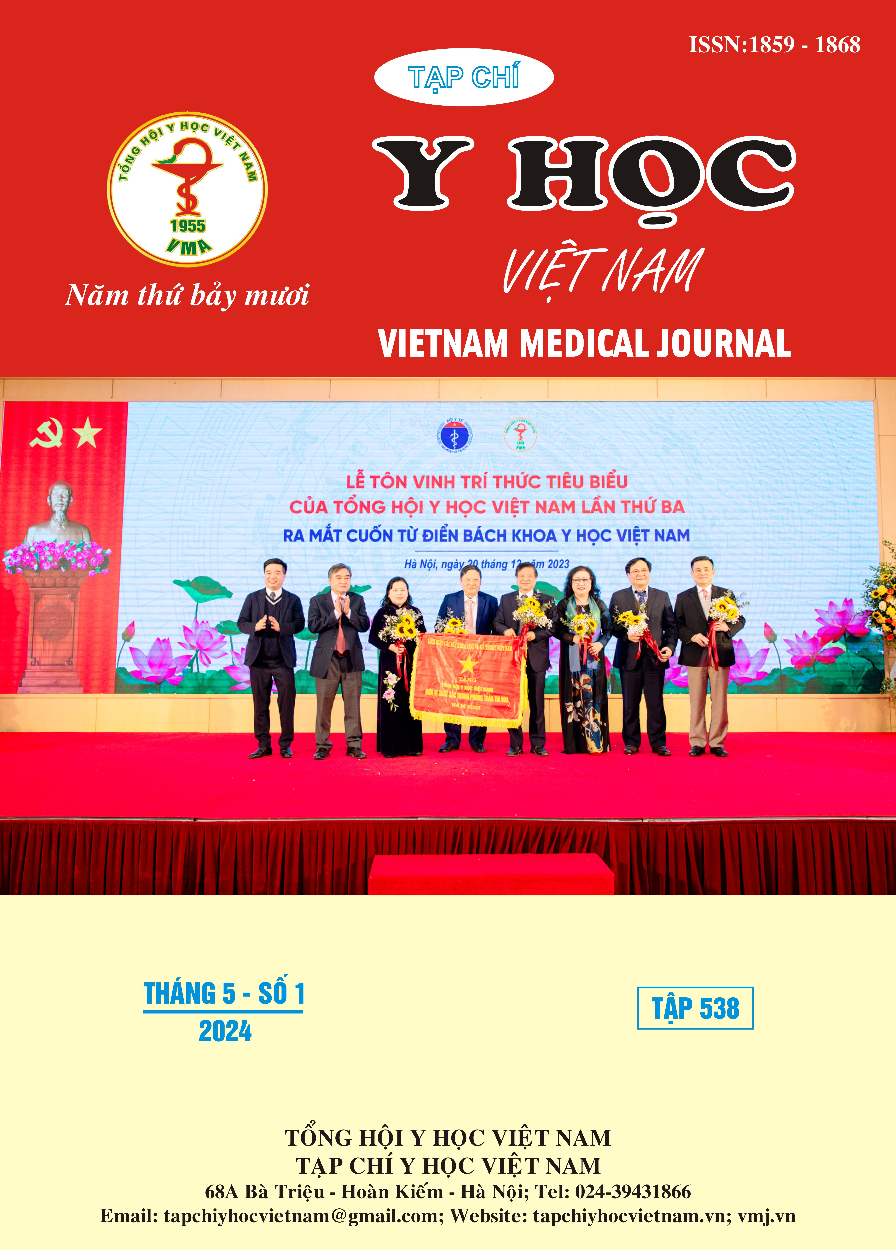CHARACTERISTICS OF PRE-ECLAMPSIA WITH SEVERE FEATURES AMONG PREGNANT WOMEN MANAGED AT HA NOI OBSTETRICS AND GYNECOLOGY HOSPITAL
Main Article Content
Abstract
Objective: To describe the characteristics of pregnant women with severe pre-eclampsia at Ha Noi Obstetrics and Gynecology Hospital in 2022. Materials and method: A retrospective cross-sectional study describing 125 pregnant women diagnosed with pre-eclampsia at Ha Noi Obstetrics and Gynecology Hospital in 2022. Results: There were a total 125 women with preeclampsia (PE), 96 patients (76.8%) were diagnosed with PE with severe features. Most of those were under 35 years old (55.2%) and diagnosed at a gestational age before 34 weeks (62.5%). 78.1% of which were presented with hypertension grade 2 or higher (systolic blood pressure ≥ 160 and/or diastolic blood pressure ≥ 110 mmHg). The majority of those were exhibited edema (81.3%) and proteinuria ≥ 0.5 g/l (74.0%). The prevalence of symptom related to target organ damage were 43.6%. Conclusion: Pre-eclampsia with severe features typically occurs before 34 weeks. Of which, severe hypertension is the most common severe features.
Article Details
Keywords
Preeclampsia, severe preeclampsia
References
2. L. Duley (2009). The global impact of pre-eclampsia and eclampsia. Semin Perinatol, 33 (3), 130-137.
3. Gestational Hypertension and Preeclampsia: ACOG Practice Bulletin Summary, Number 222 (2020). Obstet Gynecol, 135 (6), 1492-1495.
4. T. L. G. Trương (2022). NGHIÊN CỨU GIÁ TRỊ CỦA SIÊU ÂM DOPPLER TRONG TIÊN LƯỢNG TÌNH TRẠNG SỨC KHỎE CỦA THAI Ở THAI PHỤ TIỀN SẢN GIẬT. Tạp chí Điện quang & Y học hạt nhân Việt Nam, (29), 48-48.
5. L. Belay Tolu, E. Yigezu, T. Urgie et al (2020). Maternal and perinatal outcome of preeclampsia without severe feature among pregnant women managed at a tertiary referral hospital in urban Ethiopia. PLoS One, 15 (4), e0230638.
6. M. Storgaard, A. Loft, C. Bergh et al (2017). Obstetric and neonatal complications in pregnancies conceived after oocyte donation: a systematic review and meta-analysis. Bjog, 124 (4), 561-572.
7. S. Lisonkova andK. S. Joseph (2013). Incidence of preeclampsia: risk factors and outcomes associated with early- versus late-onset disease. Am J Obstet Gynecol, 209 (6), 544.e541-544.e512.
8. B. M. Sibai (2005). Diagnosis, prevention, and management of eclampsia. Obstet Gynecol, 105 (2), 402-410.
9. P. L. Nam (2016). Nghiên cứu nồng độ acid uric máu trong bệnh lý tiền sản giật – sản giật và mối liên quan với những biến chứng mẹ và kết quả thai nhi, Luận văn tốt nghiệp Bác sỹ nội trú, Trường Đại học Y Dược, Đại học Huế.,


